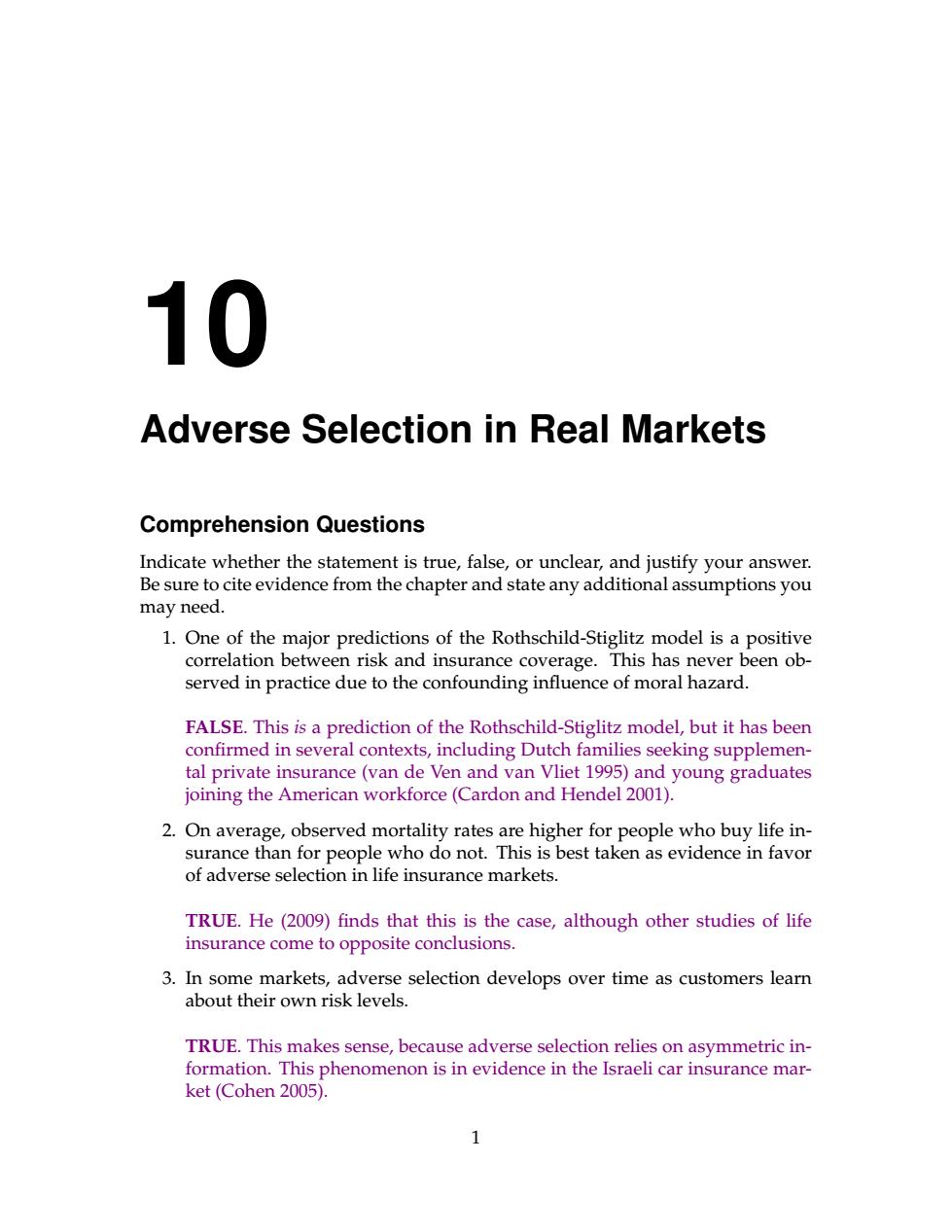正在加载图片...

10 Adverse Selection in Real Markets Comprehension Questions Indicate whether the statement is true,false,or unclear,and justify your answer. Be sure to cite evidence from the chapter and state any additional assumptions you may need. 1.One of the major predictions of the Rothschild-Stiglitz model is a positive correlation between risk and insurance coverage.This has never been ob- served in practice due to the confounding influence of moral hazard. FALSE.This is a prediction of the Rothschild-Stiglitz model,but it has been confirmed in several contexts,including Dutch families seeking supplemen- tal private insurance(van de Ven and van Vliet 1995)and young graduates joining the American workforce(Cardon and Hendel 2001). 2.On average,observed mortality rates nigher for people who buy life in surance than for people who do not.This is best taken as evidence in favor of adverse selection in life insurance markets. TRUE.He(2009)finds that this is the case,although other studies of life insurance come to opposite conclusions. 3.In some markets,adverse selection develops over time as customers learn about their own risk levels. TRUE.This makes sense,because adverse selection relies on asymmetric in- formation.This phenomenon is in evidence in the Israeli car insurance mar. ket(Cohen 2005). 110 Adverse Selection in Real Markets Comprehension Questions Indicate whether the statement is true, false, or unclear, and justify your answer. Be sure to cite evidence from the chapter and state any additional assumptions you may need. 1. One of the major predictions of the Rothschild-Stiglitz model is a positive correlation between risk and insurance coverage. This has never been observed in practice due to the confounding influence of moral hazard. FALSE. This is a prediction of the Rothschild-Stiglitz model, but it has been confirmed in several contexts, including Dutch families seeking supplemental private insurance (van de Ven and van Vliet 1995) and young graduates joining the American workforce (Cardon and Hendel 2001). 2. On average, observed mortality rates are higher for people who buy life insurance than for people who do not. This is best taken as evidence in favor of adverse selection in life insurance markets. TRUE. He (2009) finds that this is the case, although other studies of life insurance come to opposite conclusions. 3. In some markets, adverse selection develops over time as customers learn about their own risk levels. TRUE. This makes sense, because adverse selection relies on asymmetric information. This phenomenon is in evidence in the Israeli car insurance market (Cohen 2005). 1